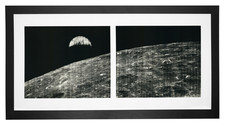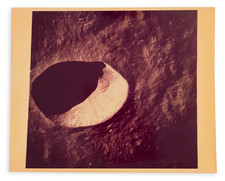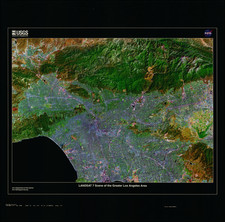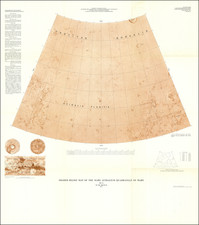This Apollo Target of Opportunity Flight Chart (ATO), prepared for the historic Apollo 10 mission, dated 18 May 1969, represents a critical navigational tool developed by the Aeronautical Chart and Information Center, United States Air Force, for the National Aeronautics and Space Administration. The chart encapsulates the complexity of lunar exploration at the height of the Space Race, illustrating the planned photographic reconnaissance and geological observations for one of NASA's final preparatory missions before the iconic Apollo 11 lunar landing.
The Apollo 10 mission served as a "dress rehearsal" for the imminent lunar landing, testing all the procedures, excluding the actual landing. This chart, elaborating on photography settings, film exposure settings, and various landmark data, was crucial in planning the mission's intricate maneuvers and scientific objectives, ensuring the crew's ability to locate and document specific lunar features.
The document is a testament to the technological innovation and collaboration of the era, noting the involvement of the Department of Defense and the United States Air Force in its preparation. The ATO chart's Mercator projection and detailed annotations on lens settings, frame intervals, and target numbers reflect the demanding precision required in space navigation and photography. Such charts were indispensable in maximizing the scientific yield of lunar missions, guiding astronauts to photograph and observe lunar phenomena and landmarks critical for future expeditions.
Apollo 10 was a May 1969 mission which acted as a practice run for the Apollo 11 mission. The mission was set up in the same way as Apollo 11 would be two months later, with a crew of two in a lunar module descending near to the surface of the moon while the main capsule remained in orbit. As such, it was the first fully manned Apollo mission to orbit the moon and the second manned orbit of the moon after Apollo 8. NASA refers to the mission as "an actual crewed landing, except [for] the landing."
The mission was manned by John Young, Thomas Stafford, and Gene Cernan, with the latter two commanding the lunar module while the former stayed in the command module. All three of them would return in later Apollo missions despite some issues with NASA management which highlighted the politics of the program.
NASA was worried that the astronauts would attempt to land on the moon, and, as such, they decided to short fuel the lunar module. The module had approximately ten percent less fuel than the Apollo 11 mission, just enough to complete the mission. Had they attempted to land, they would be left unable to return to the command module. The astronauts arrived within 8.4 kilometers of the moon and collected important information regarding the moon's gravitational field, allowing for calibration of the Apollo 11 landing system.
This mission was part of an ongoing collaboration between Charles Schultz and NASA. After trying to rebuild their public image in the wake of the Apollo 1 disaster, NASA chose Snoopy as their safety mascot. Apollo 10's lunar module was named Snoopy, and its command module Charlie Brown.











![[ Orbiting The Moon -- Apollo 13 Atlas ] Lunar Orbit Scientific Visual Observation Graphics for Apollo Mission 13 April 11, 1970 Launch Date](https://storage.googleapis.com/raremaps/img/small/68100.jpg)




